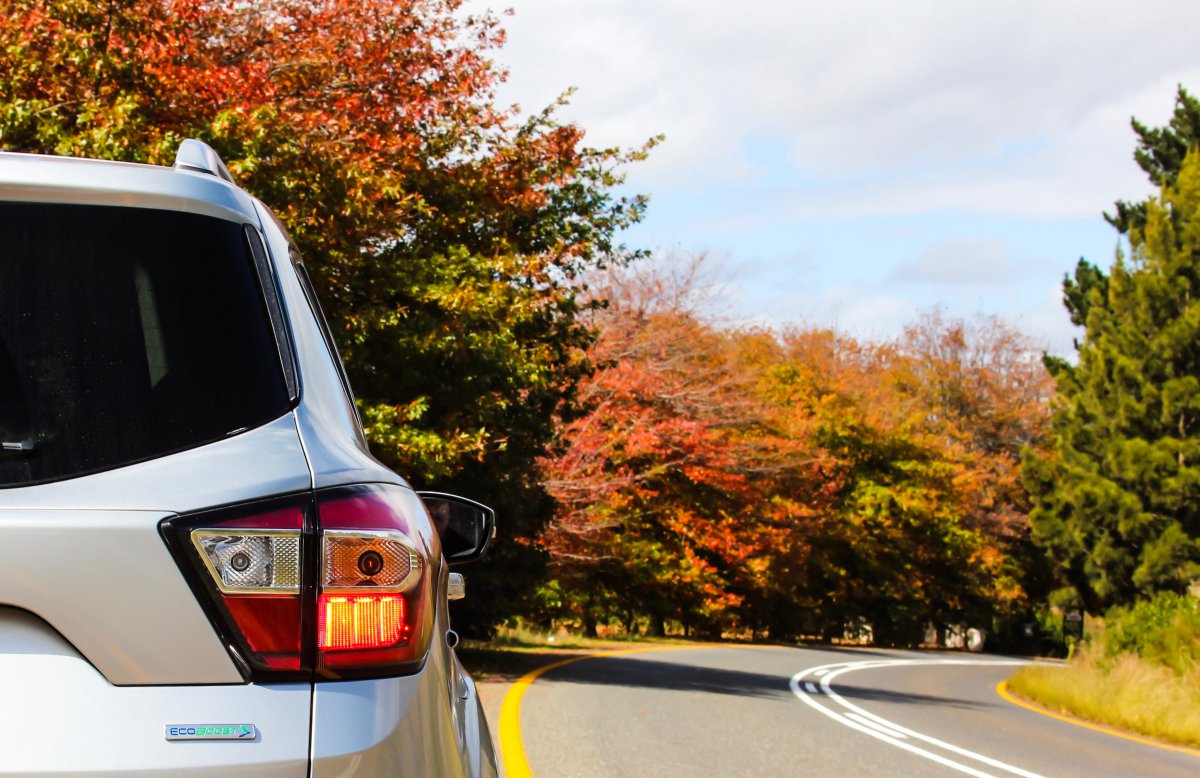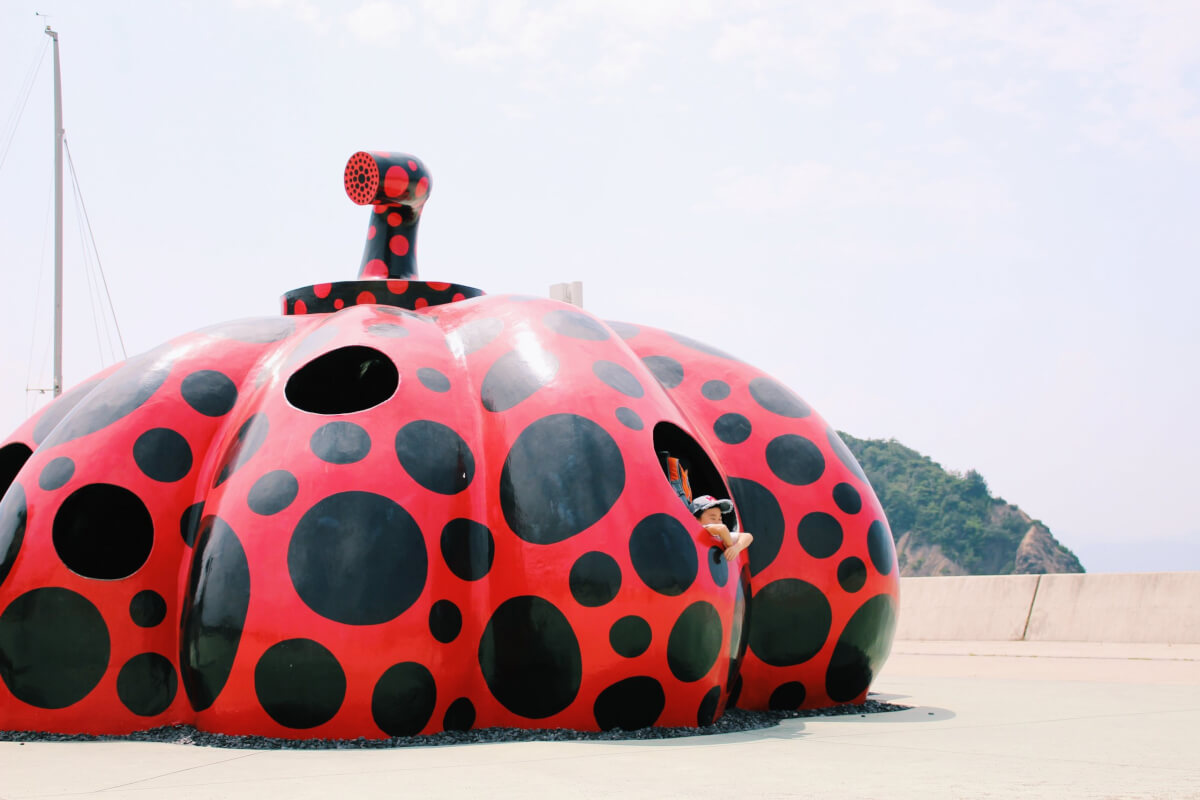If you are planning to visit Japan, it is important to think about how to get around the country. In cities like Tokyo, Kyoto, Osaka etc, the public transport network is developed and very reliable with frequent trains, metros or buses. However, once you go outside of the cities and visit the somewhat more remote areas, you will find that there are less means of public transport. If you want to discover more of the rural areas or just want to have more freedom, you have the option to rent a car! Renting a car is very easy in Japan and there are countless numbers of car rental shops everywhere around the country.
In this article, we will introduce some important traffic rules in Japan, how to rent a car, and other fundamental information on driving in Japan.
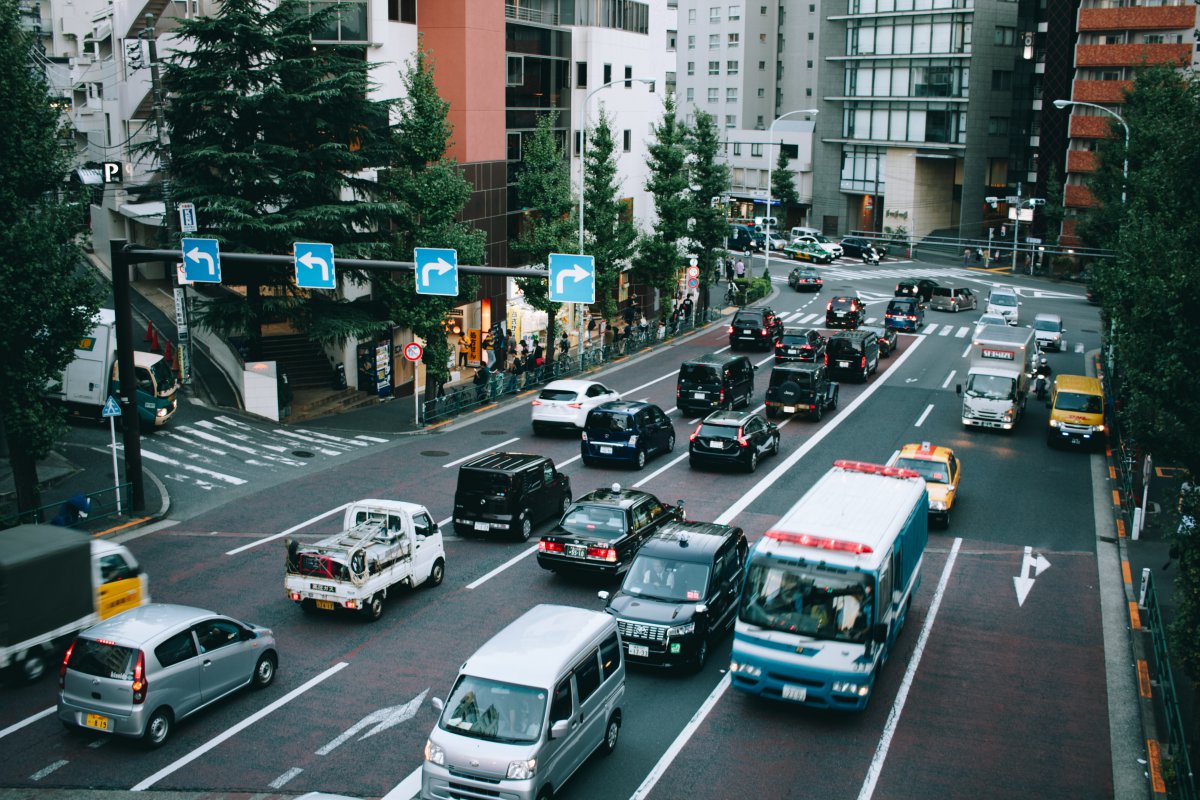
Driving in Japan
Generally speaking, driving in Japan is quite safe and easy. The Japanese are polite drivers, the roads are well maintained and most of the traffic rules in Japan are probably similar to the traffic rules in your country: you are obligated to wear a seatbelt, always carry your (international) drivers license and stick to the speed limit. In addition, there is a zero tolerance policy towards drinking and driving, the police are very strict about this. Besides a massive fine you can be sent for up to five year. Some other quick facts:
- The legal driving age in Japan is 18;
- In Japan traffic lights are often green for both cars and pedestrians;
- Pedestrians always have right of way legal driving age is 18 in Japan;
- When you get into an accident with a cyclist, you are always to blame;
- Parking in the cities can be difficult due to limited parking spaces;
- Parking is often free of charge at supermarkets and conbini;
- For medical assistance, dial 119; for police, dial 110.
Drive on the left side of the road
Depending on where you live, this is one of the biggest challenges and differences compared to driving back home. In any case, keep to the left and overtake on the right is one of the most important traffic rules to remember. In Japan, drivers are allowed to drive only on the left side of the road just like Great Britain, Australia and India. It can get a little confusing especially if you are from the United States or any other countries where cars drive on the right side of the road. Just remember: the driver is on the same side as the line dividing road lanes! In addition, all rental cars in Japan are right-hand drive, and it might take you a while to get used to it.
Speed limits in Japan
The speed limit in urban areas is 30-50 km/h, the actual limit depends on the roads but will be clearly marked. In the more rural areas the speed limit is often 80 km/h and on the highway (expressways) the speed limit is 100 km/h. The Japanese stick to their speed limits religiously! In addition to the speed limit, there is also a speed minimum on the highways, you can recognize this by the underlined number.
Stop at the railroad crossing
In Japan, you are required by law to always stop at the railroad crossing. It is for safety reasons, and you are supposed to check both ways to make sure no trains are coming. The police sometimes watch the cars passing through the railroad crossings, and fines might be imposed if you fail to follow these rules.

Toll roads
Many of the expressways in Japan are toll roads and upon exiting the toll road you are required to pay the toll. On most toll roads there are two ways of doing so: by ETC card or manually. The purple drive through will be marked ‘ETC’ and can only be used if you have an electronic card in your car. Many rental cars will have an ETC card included, just ask for it when you pick up the car at the car rental. Another booth will be for people paying cas, this drive through is marked green. Make sure you always carry some cash with you as often you cannot pay by card!
Learn road signs used only in Japan
Road signs help us be aware of possible dangers and drive safely. There are a number of road signs only used in Japan, some of them have unique pictures on them or are only written in Japanese. Learning about them in advance enables you to get ready for a driving experience in Japan with confidence. You can check the list of main road signs in Japan on the website below.

International Driver’s License
You need a valid driver’s license to rent and drive a car in Japan. Tourists from designated countries are allowed to drive a car with a driver’s license that was issued in their own country. If your license was issued by a country affiliated with the 1949 Geneva Convention, you will need an international driver’s license, also called IDP (International Driving Permit), too. You can get these easily and cheaply in your country and they are often valid for one year. Remember to bring your ‘normal’ drivers’ license and passport too.
The international permits look very similar, but keep in mind that Japan is extremely strict when it comes to international regulations. Always make sure you bring your passport, driver’s license and other documents, without those you will not be able to rent a car. If you are not sure whether you’ll need an international driver’s license, contact your embassy or visit the website of the Tokyo Metropolitan Police Department.
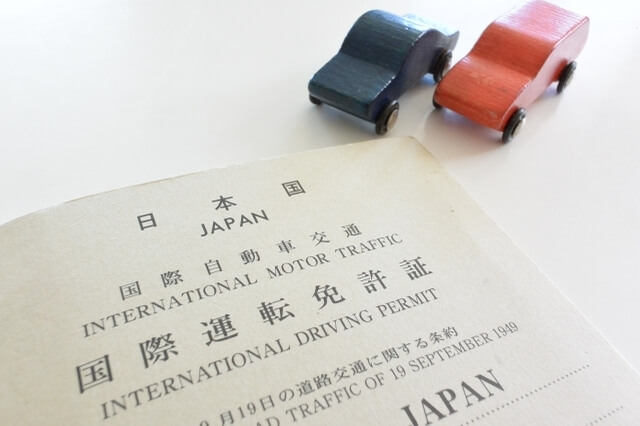
Renting a car in Japan
Renting a car enables you to travel Japan more comfortably and at your own pace. It may seem a little bit challenging, especially if you are not familiar with the Japanese roads. However, there are no complicated rules or restrictions for foreigners to rent a car, and renting a car in Japan is an easy process that can be completed in just a few steps online! You can find car rental shops easily throughout the country. Check the basic process shown below to get a better understanding of renting a car in Japan.
1. Find a rental shop
Find a rental shop where you are going to rent a car. There are a number of companies with convenient locations in urban areas or countryside such as Times Car Rental, Toyota Rent A Car and Nippon Rent A Car. Choose a convenient location depending on your itinerary and destination. Most have an online reservation system available.
2. Make a reservation
Making a reservation online is the easiest way to secure your rental car. You can also visit the shop to choose the model of car you want to rent, though online is the most carefree option. Online reservation is recommended as (popular) cars can easily get booked especially before the holiday seasons. Make sure to book your rental car soon after your itinerary is fixed!
3. Get in the car and enjoy your road trip!
Pick up the car and start your journey! The rental car shop will definitely ask you for your passport and a valid international (!) driver’s license. Drive safely and follow the traffic rules while you are driving. Before you return the car, it is your responsibility to fill up the tank. Don’t forget to keep the receipt of the gas station when you return the car, you are often required to show the receipt!
If you plan to visit only big cities such as Tokyo and Osaka, renting a car won’t be necessary as the public transport is well developed, cheap and punctual. But if you want to visit the more rural areas, renting a car is a great option to explore everything at your own pace.
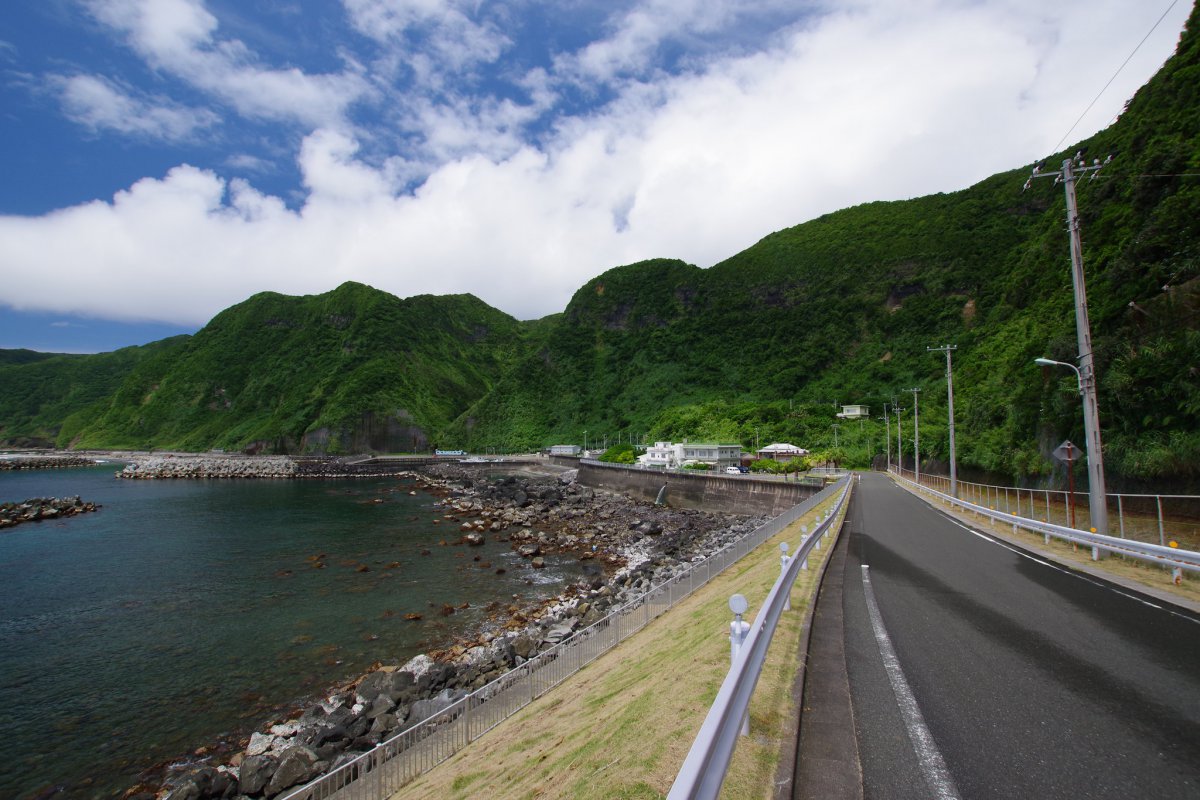
In case of emergency
What to do in case of car accidents or having any trouble while driving in Japan?
When you get in a car accident or when your car breaks down, it’s important to assure your safety first. Let the car behind know that you’re stopping the car with hazard lights before you stop. And do not walk around the car on the road and be aware of the following cars behind – move to the sidewalk while waiting for help to arrive.
There are three ways to get help; call at 110 for police, call #9910 when you find some trouble on the road (falling objects, broken road etc) or use the emergency phone on the side of the highway or toll road. If there are any injured, call at 119 for an ambulance.
If you caused the accident, make sure to get the person’s name, phone number and the car number for the future process.
When you rent a car, don’t forget to call at the rent-a-car place. Car insurance is generally included on the rental price, so if it’s a small accident, it’s possible that it will be covered.
Gas stations in Japan
Gas stations are called gasoline stands in Japanese. It’s pretty easy to find one everywhere in Japan.
There are two types of gas stations; full-service and self-service.
For full-service gas stations, a staff will lead you where to stop, and take an order. They will ask you what kind of gas (regular, high octane etc) and how much you need (full tank). Or you can simply say “Regular mantan de onegaishimasu (a full tank of regular gas, please).”
Not only will they refuel the car, but also they will clean your car windows, take out the garbage and ashtray, and check the tires. You just need to wait inside of the car or check out the small shop/ use a bathroom if you want while a friendly staff takes care of everything! It costs a little more than a self-service gas station since they include a service fee, but if you are a beginner it’s very convenient to use a full-service gas station.
For self-service gas stations, many of them are open 24 hours. It may seem difficult at first since you have to operate the machine by yourself. But don’t worry, you can always call a staff member, there are always some staff at the gas station who can assist you in the process.
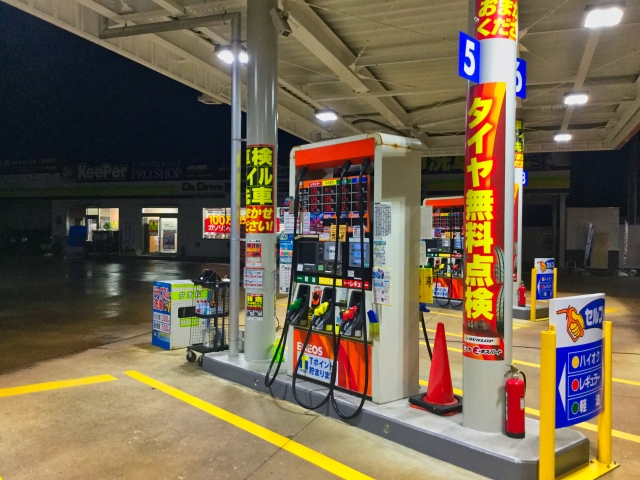
Parking in Japan
In the urban areas, Japan offers limited space for parking. There are several unique parking features which allow you to park a lot of cars in a limited space. The Japanese Parking Garages are often easy to use even if you don’t read Japanese. The Japanese Underground Parking garage is an innovative solution which can accommodate a number of cars and vehicles. They are generally designed in the basement of big shopping malls or buildings in urban areas. Multistory Parking Garage is another facility consisting of several stories of parking space. You may park your car nose-in in your country, but many Japanese reverse their car when they park their cars. It helps you leave the parking lot more easily as you can check surroundings for safety.

The best driving destinations
Many think that it’s relatively difficult to drive in a metropolitan area like Tokyo, Osaka or Nagoya due to its dense traffic. That explains why these prefectures are in the top 3 where the most traffic accidents are caused in Japan. If you want a more peaceful driving experience and enjoy beautiful scenery, here are the best driving destinations in Japan!
1. Nirai Kanai Bridge (Okinawa)
When you travel to Okinawa, you should definitely rent a car and drive around, that’s the easiest way to get around.
This 1,200 meters long bridge is located in Nanjo City, the south part of Okinawa. Its U-shaped unique bridge across prefectural road 86 to national road 331. You can enjoy the breathtaking view of the blue ocean when it’s sunny. There is an observation deck which is on the top of the tunnel, so don’t forget to stop by to enjoy the best view! Recommended timing to drive there is in the afternoon. If you go there in the morning, the color of the ocean will possibly be still dark.

2. Shimanami Kaido (Seto Inland Sea)
Shimanami Kaido consists of 10 bridges to connect between Ehime prefecture and Hiroshima prefecture. You can enjoy the island’s view of the Seto Inland Sea while driving from Onomichi in Hiroshima to Imabari in Ehime. There are 7 different islands on the way, and each island has fun tourist spots that you can enjoy. It’s also known as a popular cycling route, read this article to learn the best things to do along the Shimanami Kaido.
▶Complete guide to Shimanami Kaido
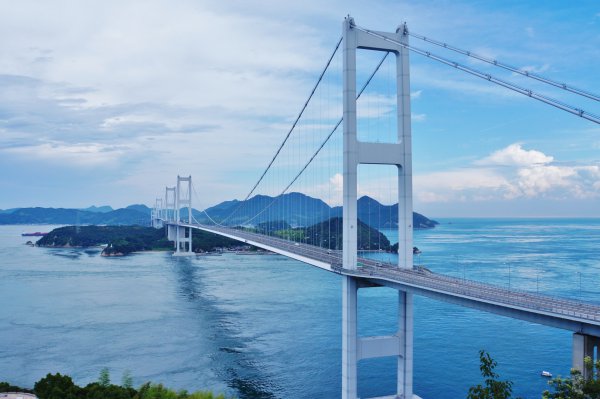
3. Venus Line (Nagano)
Nagano boasts plenty of beautiful nature spots in summer, and Venus Line is a perfect driving route! It’s a 88 km long driving route across the highlands of Nagano. Along the way, you can stop by Lake Shirakaba, Kirigamine Kogen and Yashimagahara Wetlands for the stunning view before getting to the end of the Venue Line; Utsukushigahara. It’s the best place to escape from the heat in summer since it’s less warm because of the high altitude. At Utsukushigahara, there is also an open-air museum, restaurants and shops to visit. About 350 modern sculptures are exhibited at the museum that allows visitors to enjoy the mountain’s view and art at the same time.

4. Yamanami Highway (Kumamoto / Oita)
It’s a 1-hour drive course connecting Kumamoto prefecture and Oita prefecture. Drive through vast nature, you can spot some roaming cattles on the way. There are many observation spots to stop by, for example, Kokonoe Yume Otsuribashi (a big suspension bridge) to look over valley and waterfall, Tadewara Wetlands to take a break and Makinoko Pass to enjoy the panoramic view at the highest point of the driving course.
You can enjoy this driving course all year round, and each season shows a different beauty. However, in winter, there’s a possibility to close the road due to snow or ice.
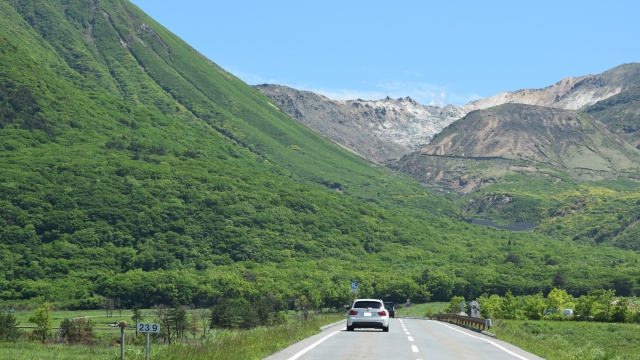
5. Mt. Fuji Skyline
Never get tired of the view of Mt. Fuji, Mt. Fuji Skyline is a popular driving route between Fujinomiya City and Gotemba City in Shizuoka prefecture. It’s the route that connects to the starting point of Mt. Fuji climbing. Needless to say, you can enjoy the best view of Mt. Fuji while driving!
During peak season, there’s a limit for driving through the route in order to reduce the traffic and environmental concerns. In 2021, it’s from July 10th to September 10th. During that time period, only buses, taxis or bicycles can use this road. The best season to drive Mt. Fuji Skyline is in autumn or spring. From the end of September toward the end of October, you can see the beautiful autumn foliage. In spring, cherry blossoms will be fully bloomed from the end of April to the early May.

Roads in Japan are relatively narrow, especially in the more rural areas, and there are a number of crosswalks where all cars are supposed to stop when someone is walking across it. On the other hand, there are few roundabouts, which can be found everywhere in some other countries. Highways are well developed and maintained, and take you to any area conveniently. In general, the use of most expressways are subject to tolls, which can be paid cash or by ETC card. Lastly, before you hit the road, learn the basic rules about driving in Japan and make sure to follow these. Enjoy an exciting driving experience in Japan!
If you plan to visit only big cities such as Tokyo and Osaka, probably renting a car won’t be necessary as the public transport is well developed, cheap and punctual. But if you want to visit the more rural areas, renting a car is a great option to explore everything at your own pace.
Follow us on Instagram or Facebook for more travel inspiration. Or tag us to get featured!
Happy travelling!
Articles you might also like
This post may contain some affiliate links. When you click through and make a purchase we may receive some commission, at no extra costs to you.
